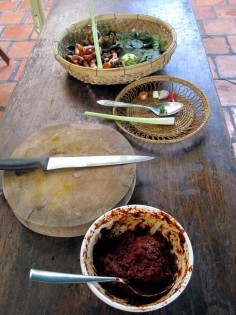
5 ways to make the most of monsoon season Asia travel bargains
Just because it's the rainy season doesn't mean it's wet, wet, wet all the time, so take advantage of low season bargains and less crowded tourist spots
Emerald green paddiesdotted with sugar palms and shimmering lotus-lined ponds stretch towards the horizon. The rich green is in stark contrast to the menacing grey of the looming skies above.
While most run a mile at the thought of travelling in places such as Cambodia, Vietnam and Myanmar during the rainy season, visiting during the wet months can be a rewarding experience. The dust has settled, the air is fresh, the light is softer, the oppressive heat that smothers during the months of May and June has evaporated, and the countryside bursts with life.
The wet season varies slightly from country to country, but mainly runs from May to October, and is delivered courtesy of the southwest monsoon — although changing weather patterns have seen this year's rains arrive much later than usual.
Contrary to popular belief, it doesnt rain continuously. Most downpours don't last too long and there are few traces after little more than an hour. So grab a mac and join the fun.
Water wonders
While it's worth checking for flooding during wet season, a lot of the region's rivers and waterfalls are in their prime during monsoon months. Many, which dry up during the winter months, are swelling with rainwater, and trickling streams transform into gushing rivers, while roaring waterfalls come to life.
Laos is a prime example, with Tad Sae, which sits about 18 kilometres southeast of Luang Prabang, resembling barely a trickle during the dry season. However, after the rains, the splendid turquoise blue pools are full to the brim, topped up by a staircase-like series of cascading waterfalls.
It's a popular spot with Laotians, who tend to bathe fully clothed, so suitable swimming attire is recommended. There is a host of other activities to indulge in too, with elephants greeting guests at the entrance and snack bars to stave off hunger with local delights, such as green papaya salad and barbecued meat.

Fantastic flora and fauna

Definitely not for the faint-hearted, but for those who dare, a trip into the remote jungle of Cambodia is an adrenaline junkie's dream. Nestled deep in the southwest of Southeast Asia's largest remaining rainforest, near the village of Chi Phat, sits NGO Wildlife Alliance's release station base turned eco-tourism site.
Here, you can see rescued animals that have been nursed back to health at the group's Phnom Tamao centre in the capital. Rustic, wooden lodges sit in a grass area from which guests can get up close and personal with rehabilitating birds and animals such as endangered sun bears, leopard cats, macaques and slow lorises.

Time to taste

However, if you need to shelter from the showers, a great way to immerse yourself in the culture is to take a cookery course. These are readily available across the region.
Thai Farm Cooking is nestled in the heart of Chiang Mai's lush rolling countryside in the north of Thailand and gives guests a great opportunity to learn more about local flavours.
Here, budding chefs are shown around bustling local markets and the farm's organic gardens, where herbs, vegetables and fruits, such as basil, mangoes, rambutan, jackfruit, galangal and morning glory, grow in abundance. They also learn how to cook a delicious three-course Thai spread.

Cracking times

Catch one in full force from an iconic viewpoint, such as on the terrace of Sutaungpyei pagoda at the 240-metre summit of Mandalay Hill in Myanmar. Sunsets are also at their finest after a good shower has washed away the clouds, paving the way for a stunning sky of colour.
The pagoda, which is lined with glittering coloured tiles, is a perfect place to rest after climbing the covered stairways that snake up the hill — a climb that, according to legend, Buddha once made.

Gimme shelter

Head for a cafe, bar or street restaurant. When the rain hits, locals huddle together under awnings or in shops. Take the chance to chat with them and learn more about the country and culture.
It's also the perfect time to visit the market. Binh Tay in Ho Chi Minh City, Vietnam, is a must-see. Slightly off the beaten track, it is undoubtedly a richer experience than a trip to its more popular counterpart, Ben Thanh.
While you wait for the rain to stop you can trawl through two floors of household items, beauty products, trinkets and electrical items. A sprawling food section offers the usual Vietnamese street fare, and some Chinese-inspired options. The market sells what is perhaps the city's best banh bao, a Vietnamese version of the Chinese bun stuffed with meat, vegetables and egg.
How to ride out the storm
• Ditch the umbrella in favour of the compact, disposable plastic ponchos available from street vendors.
• Carry flip-flops in your bag, as temporary flooding often follows downpours and there is nothing more annoying than soggy shoes.
• Wrap valuables such as wallets, documents and electronics in a plastic bag to prevent water damage.
• Pack strong insect repellent, as the rain brings an increase in all things that bite.

